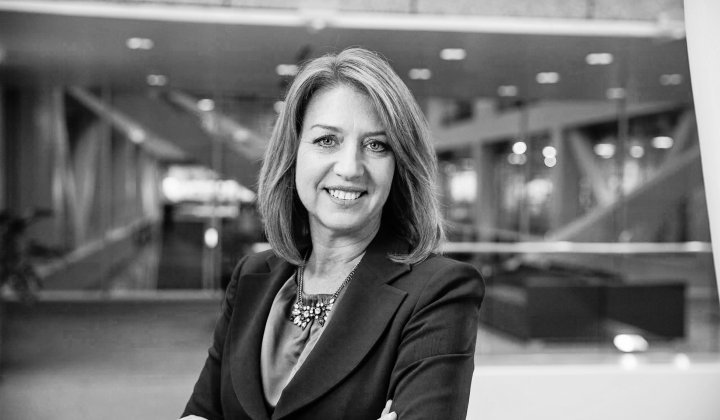We spent two-and-a-half hours with Rwanda’s Paul Kagame just days before his inauguration in August. He wrapped up a meeting with the Egyptian president, blocked out his diary and cleared the room of all except for himself and the 56 of us there as part of a teaching programme. “Ask whatever you want,” was his invitation. And so we did.
Kagame did not use notes, nor did he shy away from responding fulsomely. He was forthright, open and direct. It’s hard to think of many presidents who could replicate this level of access.
Not surprisingly the conversation was held according to Chatham House Rules, so while we respect the meat of the discussion is off limits, it is certainly possible to share our impressions of this imposing man and his leadership approach.
We are not alone in trying to understand him. There have been any number of attempts by commentators to categorise Kagame’s approach. The likes of Harvard’s Michael Porter is a fan of the Rwanda economic transformation story under Kagame’s leadership. As is former British Prime Minister Tony Blair. Some regard his approach as ‘business-like’, others as a ‘balancing act’ and there are the detractors who accuse him of being heavy-handed, of squashing political dissent and media rights and, to quote author and journalist Philip Gourevitch, of being ‘unapologetically authoritarian’.
The briefing session was an unusual opportunity to hear his views on leadership, to understand his commitment to the presidency and interrogate his plans for the country. He is articulate, tall and imposing, clear and astute. He has a dry sense of humour and a deep capacity to connect with his audience. He is determined and pragmatic, and has a good sense of global developments. He is clearly a high-performance individual who may be affable but is every bit the military commander. He is, in short, a strong leader in every sense of the word.
Dictator or leader?
Just recently during the launch at GIBS of his book Making Africa Work, former Nigerian president Olusegun Obasanjo praised the likes of Rwanda and Ethiopia for their achievements under such strong and all-but-unassailable leaders. “I don’t know whether you would call them benevolent dictators. I would call them strong leaders,” he said, noting that these strong leaders were as important as strong institutions, “especially [for] a country that is still building up”.
Obasanjo pointed to an African way of leadership, an approach which takes cognisance of the nuances of a difficult past. And, in our conversation with him, Kagame too mentioned that we should be thinking about the African way, particularly with reference to the continent’s painful history.
In the case of Rwanda, this history is impacted not only by the colonial legacy but also by a bruising and brutal genocide. One which Gourevitch, in his book We Wish to Inform You That Tomorrow We Will Be Killed With Our Families, describes how one in 10 people were killed, including 70% of the Tutsi minority population in just six weeks. More than a million people were slaughtered during the inter-ethnic violence.
This was the brutal world which shaped a young Paul Kagame. Born in Rwanda into a prominent Tutsi family (his mother was sister to a king), Kagame was three when his family was forced to flee their homeland. He grew up as a refugee in Uganda and eventually joined the rebel military force being assembled by now Ugandan President Yoweri Museveni, in the process befriending Museveni and becoming his intelligence chief. He was one of 50 leaders who went on to form a Rwandan liberation force – the Rwandan Patriotic Front (RPF) – which managed to enter Rwanda to end the 1994 genocide, gain control, pacify the population and restore peace.
Even today, the fear of another uprising has seen the criminalisation of ethnic slurs and divisions. Kagame is adamant that no discrimination will be tolerated and, to highlight the fact that some 25% of the population have great grandparents who are both Hutu and Tutsi, Kagame has taken a DNA test showing that he too has both Tutsi and Hutu heritage.
Building social cohesion is as challenging a job as the economic revival of the country, but Kagame’s visible success in this regard is the reason why 98.63% of Rwanda’s 6.9 million registered voters endorsed him for a third term and why, prior to the 2017 vote, 98% of Rwandans voted ‘yes’ in a referendum to allow Kagame to serve for an additional seven years (up from the previous five-year terms). This puts the man who took over as president in 2000 in the driving seat until 2024.
Rwanda's economy
What will he do with that extra time? Build on the legacy which has transformed Rwanda over the past 17 years and turned Kigali into a clean and model city.
To really understand the impact of his policies, it is important to understand the Rwanda of today. Yes, the country is small, with a population of just under 12 million people, a GDP of US$8 billion and GDP per capita (adjusted for purchasing power parity) at about US$1 800. The country’s annual growth rate, since 2005, is between 8% and 10%.
Juxtapose this to the situation in 1994 when, coming out of the genocide, the country’s economy had shrunk by 50%, inflation was 64% and GDP per capita (PPP adjusted) was US$673. This was a country of 5.1 million people in which most of the skilled professionals had been targeted during the civil war. There were two million refugees abroad and 900 000 displaced people, and almost half of Rwanda’s children had lost one parent.
While the first turnaround steps in 1994 involved managing inflation, reforming public administration and liberalising the economy, the real growth trajectory came when Kagame officially became head of state. That’s when Vision 2020 was formulated, following a broad consultation process, and a long-term development strategy was established to transform Rwanda into a knowledge-based, middle-income country.
Kagame and his colleagues continue to position Rwanda as an ICT economy, as a country which is open for business and eager for foreign direct investment. Rwanda is ranked second in Africa (behind Mauritius) for ease of doing business by the World Bank and, in South Africa, we often talk in envious tones about the fact that it takes 48 hours to set up a business in Rwanda. The Rwanda Development Board (RDB) continues to drive a concerted and strategic focus on investment, exports, tourism, IT promotion and SME development; so much so that Harvard graduate Clare Akamanzi, the current head of the RDB, is also a member of cabinet.
Education
Kagame’s other big push has been education, and the government now offers free education to Grade 9. Today 98% of boys and girls have universal primary school education, although improving secondary education remains a serious challenge.
Gender parity has been a massive drive and, today, 67% of the Rwandan Parliament is made up of female MPs. The government also continues to fight corruption, a push reflected in the fact that Rwanda is ranked as the third-least corrupt country in Africa, according to Transparency International.
If this seems very in line with the Singapore model, it is. Rwanda has worked closely with Singapore, highlighting the resonance the Singapore story has with an African developmental approach. And, of course, for those looking to draw more parallels, Singapore’s founding prime minister, Lee Kuan Yew, ruled for 31 years.
Kagame was clear with us that he did not feel western democracy was the ideal model for Africa. But, with 98% of voters backing his continued presidency, it would be remiss to label his regime as authoritarian, in spite of opposition party claims of pressure and significant deviations from the western model.
In fact, concerns around succession certainly preoccupy Kagame. And rightly so. During our discussion he laid out details of a change of leadership in due course. He stressed the importance of maintaining stability, and to keep making progress economically and socially. This is the only way to ensure that Rwanda never falls prey to the sort of madness which decimated the country less than two decades ago.
This fear of repeating the past is ultimately what explains modern-day Rwanda. Many countries – including South Africa – could do well to learn from this.
“He is articulate, tall and imposing, clear and astute”
“Obasanjo pointed to an African way of leadership...”
“Rwanda has worked closely with Singapore...”




